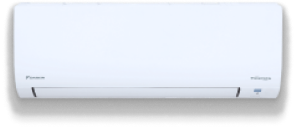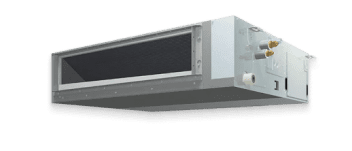
From the reception desk to the boardroom, the temperature of air-conditioning can stir up all sorts of “heated” debate and more than the occasional “frosty” glare in any workplace.
In fact, a series of surveys have noted office temperature is a major bugbear for many employees.
So, what is the ideal air conditioner temperature? Oh, and spoiler alert, it’s not a season-in-season out 22 degrees…
The battle for comfort
In 2015, a survey of US employees found that 42 per cent of office workers think their office is too cold while 56 think it’s too warm, which goes to illustrate the point that while we have temperature control at our fingertips, it can be hard to agree on what the right temperature is.
Traditionally many Australian offices have tried to keep things simple, leaving the thermostat firmly fixed to 22 degrees day in day out, but there’s long been a school of thought that says setting your air-conditioner at a standard 25 degrees can save business money.
While that’s true, there is a little leeway, because it turns out the optimum level of comfort and environmental efficiency are achieved when you set your temperature to the season.
Different temps for different seasons
SafeWork Australia notes the office temperature should factor in the ambient conditions outside and what employees are wearing. They state most sedentary staff work comfortably in an office when temperatures are between 20°-26°C.
In winter when employees are wearing winter clothes that temperature should be 20°-23°C, and in summer between 23°-26°C when staff are wearing lightweight clothes.
Meanwhile, Government website Energy Cut argues in the interests of efficiency and comfort you can even take that a little further.
They note, just a one-degree difference in your thermostat setting can increase your heating and cooling bills by up to 10 per cent.
So they suggest the ideal winter temperature for an office thermostat should be between 18° and 20°C degrees, while in summer, the ideal setting is between 24° and 27°C.
And if the external temperature is pretty comfortable, they urge business owners to turn the HVAC off altogether.
Not just discomfort
Complaining might be the main symptom that your office air-con is not set to the ideal temperature, but the ramifications can extend far beyond unhappy staff.
SafeWork Australia goes on to explain: “The risk to the health of workers increases as conditions move further away from those generally accepted as comfortable…Air temperatures that are too high or too low can contribute to fatigue and heat or cold-related illnesses.”
Meanwhile, some studies have estimated that productivity can drop off by as much as 20 per cent if the temperature is too uncomfortable.
Position counts
The type of work staff do and where they are positioned in relation to the air-conditioning system and windows can also impact how workers experience temperature control.
“It is important to recognise that even though the whole temperature of the office may be sitting within the specified range, some areas may be above or below the recommended temperature. If someone sits directly under an air conditioning vent, then they may be in a draught and therefore much cooler than need be,” another workplace health and safety website notes.
“Equipment can also produce heat, raising the temperature in a particular area, and even a small room with a number of workers in it can see a rise in temperature.”
Their top tips?
- regulate air conditioning in Sydney for temperature and humidity
- avoid locating workstations directly in front of or below air conditioning outlets
- install deflectors on air vents to direct airflow away from people. These measures will help prevent staff from being annoyed by draughts, particularly those directly under a vent.
- control direct sunlight (radiant heat) with blinds, louvres and window treatments
- minimise draughts and thermal differences between the head and the feet (thermal gradients)
- ensure adequate air flow; feelings of stuffiness can result when air flow is low, and draughts occur when air flow is high – an air flow rate of between 0.1 and 0.2 metres per second is desirable.
- ensure workers are aware of how the air-conditioning is managed in your building, and explain any roadblocks in the way of ensuring an even temperature.
About Climacool
If your air-conditioning is causing headaches in the workplace, Climacool is available to assist.
Servicing the greater Sydney region, Climacool Air Conditioning prides itself on superior service and quality workmanship.
We work with the leading brands in the field of heating and cooling, and have an enviable reputation for meeting the needs of our valued commercial clientele in air conditioning installation, service, and repairs.
You can learn more about our commercial services, or contact us directly for assistance in selecting, installing and maintaining the right air conditioning system for your business.






_001.png)


.png)
